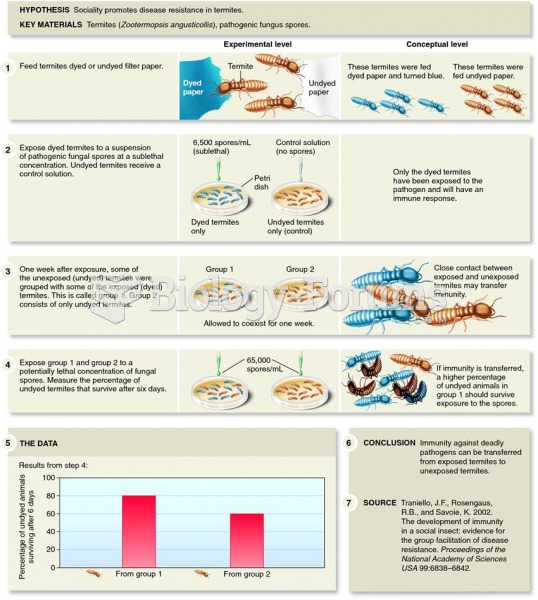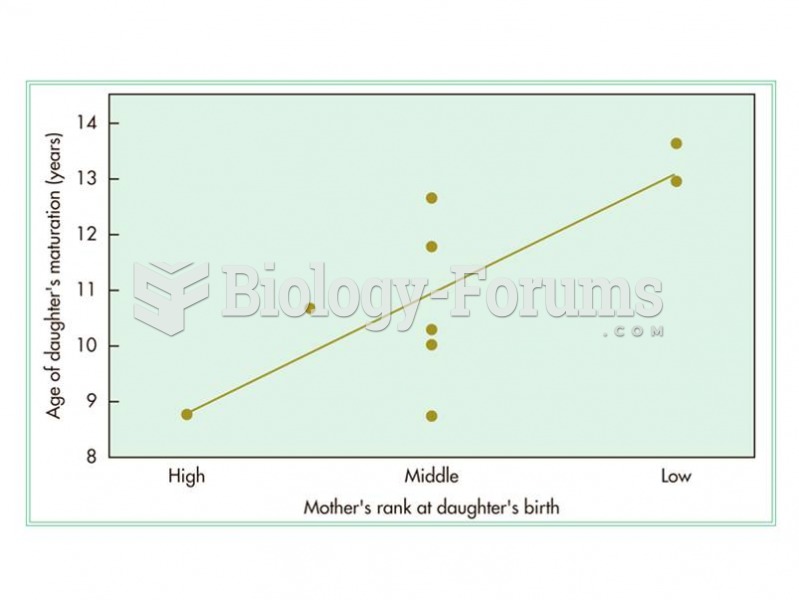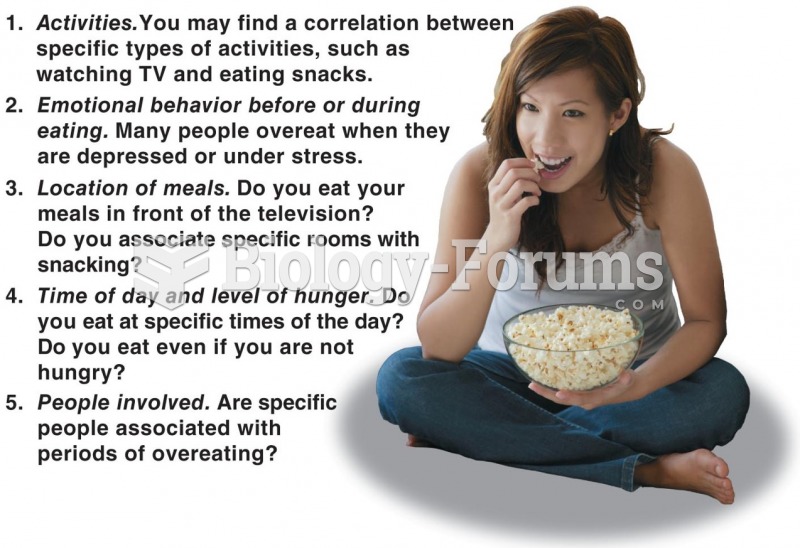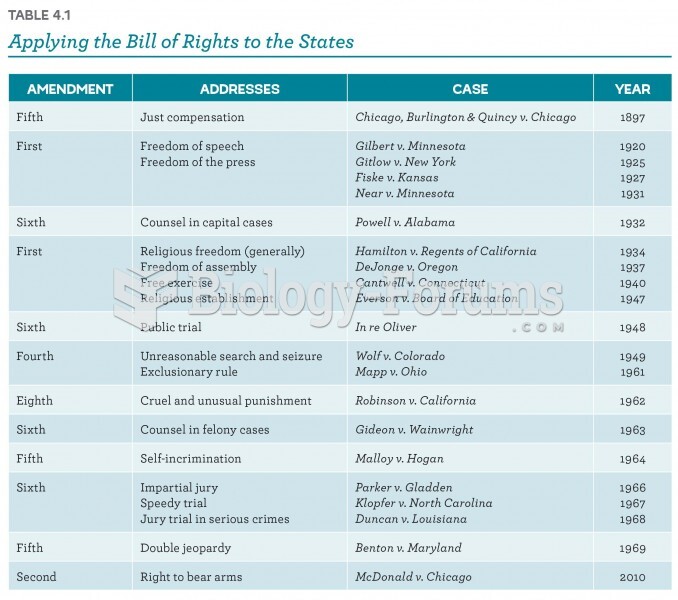|
|
|
Blood in the urine can be a sign of a kidney stone, glomerulonephritis, or other kidney problems.
Approximately 500,000 babies are born each year in the United States to teenage mothers.
Though methadone is often used to treat dependency on other opioids, the drug itself can be abused. Crushing or snorting methadone can achieve the opiate "rush" desired by addicts. Improper use such as these can lead to a dangerous dependency on methadone. This drug now accounts for nearly one-third of opioid-related deaths.
In 1835 it was discovered that a disease of silkworms known as muscardine could be transferred from one silkworm to another, and was caused by a fungus.
Russia has the highest death rate from cardiovascular disease followed by the Ukraine, Romania, Hungary, and Poland.
 Traniello and his colleagues demonstrated that social insects may develop “social imm
Traniello and his colleagues demonstrated that social insects may develop “social imm
 Zebras are several species of African equids (horse family) united by their distinctive black and wh
Zebras are several species of African equids (horse family) united by their distinctive black and wh
 In some species, dominant females have more surviving offspring that mature earlier indicating an ad
In some species, dominant females have more surviving offspring that mature earlier indicating an ad




